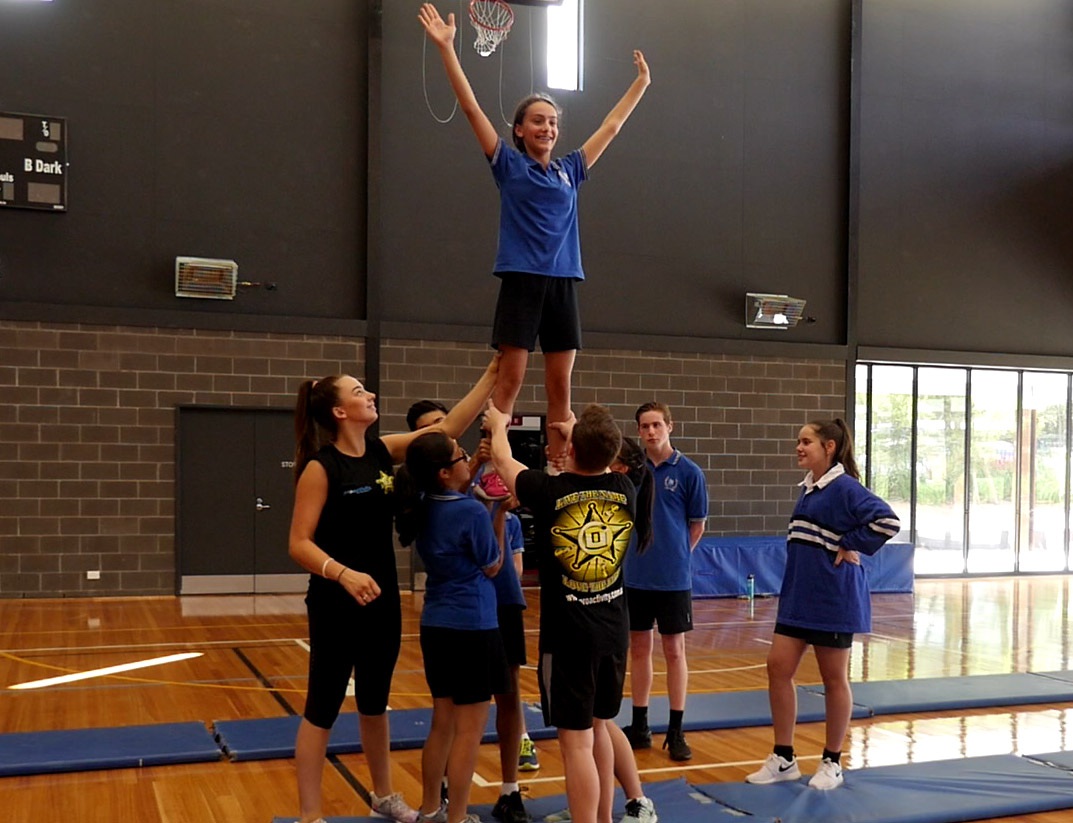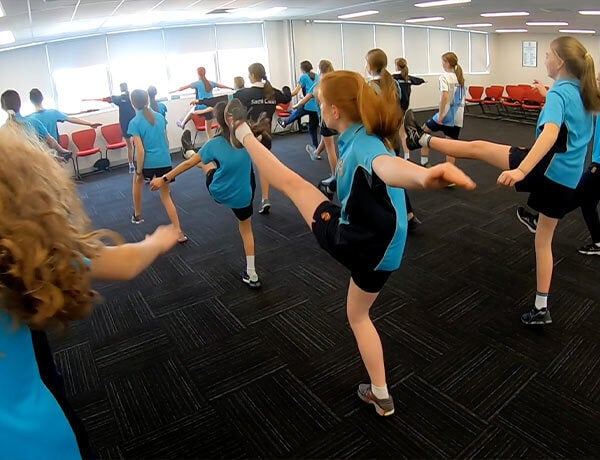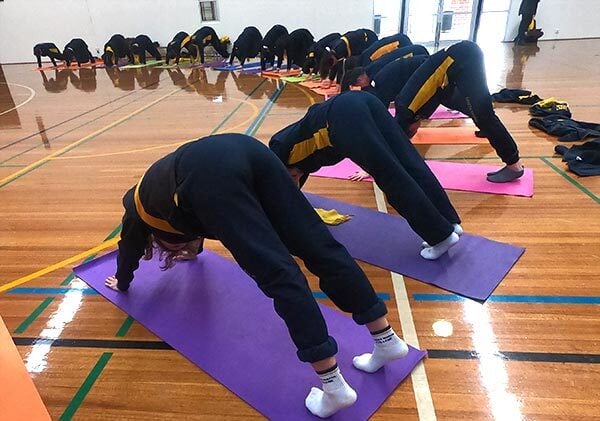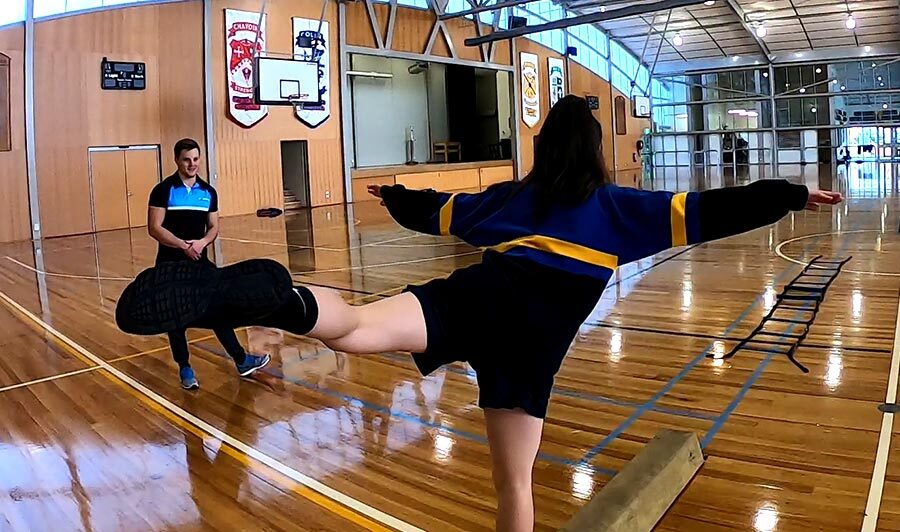Movement for life has never been more important. Proactivity has reshaped its curriculum options in the active for life category. Yoga, Pilates and Dance Fitness are just some of the offerings we have available.
Proactivity Active For Life Programs align with the Victorian Curriculum.




Allowing students to experience a state of flow, connecting and piecing together a fun and innovative routine or simply just finding themselves and their spot on the mat is what Proactivity is all about.
Key Focus Points:
Benefits:
Ensure your curriculum program meets achievement outcomes by including a progressive and engaging Mindfulness program.
Curriculum Standards met:
Moving the body
Understanding movement
Learning through movement
Major Category = Lifelong Physical Activities
Our 4-week Pilates program is focused on delivering an inclusive movement modality that meets EVERY body exactly where they are at. It is facilitated by Certificate IV in Pilates & Diploma qualified, experienced and passionate instructors.
Use feedback to improve body control and coordination when performing specialised movement skills.
Compose and perform movement sequences for specific purposes in a variety of contexts.
Practise, apply and transfer movement concepts and strategies.
Participate in physical activities that develop health-related and skill-related fitness components.
Demonstrate and explain how the elements of effort, space, time, objects and people can enhance performance.
Sports Aerobics program delivers safe, fun, and exciting lessons that focus on fundamental movements and aerobic movement sequences. Games and activities provide students with opportunities to learn through movement and support them in building the range and complexity of fundamental skills they are able to perform.
Use feedback to improve body control and coordination when performing specialised movement skills.
Compose and perform movement sequences for specific purposes in a variety of contexts.
Practise, apply and transfer movement concepts and strategies.
Participate in physical activities that develop health-related and skill-related fitness components.
Demonstrate and explain how the elements of effort, space, time, objects and people can enhance performance.
Practise and apply personal and social skills when undertaking a range of roles in physical activities.
In a 4-week Proactivity Yoga program, the students will be focusing and developing their physical, mental, emotional, and psychological health. The student-centered Yoga programs will be closely linked to the curriculum and across many areas.
Use feedback to improve body control and coordination when performing specialised movement skills.
Compose and perform movement sequences for specific purposes in a variety of contexts.
Practise, apply and transfer movement concepts and strategies.
Participate in physical activities that develop health-related and skill-related fitness components.
Demonstrate and explain how the elements of effort, space, time, objects and people can enhance performance.
Practise and apply personal and social skills when undertaking a range of roles in physical activities.
Embark on an exciting 4-week Cheerleading Incursion program specifically designed to align with the Victorian Curriculum. This engaging program seamlessly integrates cheerleading skills with educational outcomes, providing students with a unique learning experience.
Use feedback to improve body control and coordination when performing specialised movement skills.
Compose and perform movement sequences for specific purposes in a variety of contexts.
Practise, apply and transfer movement concepts and strategies.
Demonstrate and explain how the elements of effort, space, time, objects and people can enhance performance.
Practise and apply personal and social skills when undertaking a range of roles in physical activities.
Evaluate and justify reasons for decisions and choices of action when solving movement challenges.
At Proactivity we take the hassle away so that you can focus on enjoying a seamless, high impact event experience. All of our Activations include complete set up, pack down, on site supervision by specialist facilitators and are compliant ready (including Risk Assessment, Insurance and WWCCs).


Since 2007, Proactivity has inspired over 500,000 participants across Australia to get active, learn new skills, and embrace healthy lifestyles.
Programs for All Abilities, Ages 5+
Immpectable safety record


Catholic Ladies’ College (CLC) was closed to students due to the COVID-19 pandemic from the start of Term 2 for 8 weeks. During this time, CLC hired external instructors to run active lunchtime live streamed sessions, so that students could participate from home The sessions were also recorded and put onto a Wellness@home hub (intranet) for students to access at any other time.
CLC has contracted Proactivity for the past several years to conduct classroom sessions. We reached out again to Proactivity during theses unusual times as we were confident that their professional presentations would work well on camera for an audience participating via live streaming.
During this Term we had Proactivity instructors present Streetdance, Yoga and Karate Fitness. We live streamed and recorded one session, then recorded a second session with each instructor. Every instructor was punctual and professional. Their presentation style was engaging and targeted appropriately for our audience. The instructors were easy to work with and happy to accommodate our requirements in the new digital space. Working with Proactivity through the booking process was also easy and they responded to our requests quickly and with the utmost professionalism.
Today went so well! Both Bel and Estelle were so well received by the Year 7 students. We are interested in booking another session in term 4 and will let you know dates/details when we plan it out.
The team at Proactivity have enriched our Physical Education and Sport programs at Koonung. The staff are reliable, enthusiastic and always looking to tailor make sessions to best suits our students.
The coaches for our Gymnastics program were excellent! They were friendly, well prepared and extremely knowledgeable about the variety of skills being taught to our Year 8 students. The students felt comfortable with them and were able to practice and refine a variety of movements and sequences in a safe environment. It was a positive experience for all involved and we would certainly look to get the coaches back again.
The Martial Arts session was fantastic, I was very happy with how it ran and all students were engaged at all times.
Mick was outstanding, great skills in delivery and fun. The students were engaged and motivated. He catered for their needs perfectly. He covered exactly what was in the brief and the VCAL students have gained some valuable skills.
From the very beginning, the booking process was smooth and flexible and that rolled into a well organised and successful program at our school. The students were engaged and thoroughly enjoyed their experience. We look forward to continuing our relationship in the coming years.
I highly recommend Proactivity for anyone looking for an active, exciting and varied sports program. I have had the team come out to run clinics on many occasions, and have always been extremely impressed with their clinics. All the staff are highly skilled in their field and they present in a professional manner. Their enthusiasm and sense of fun are contagious!
The Holiday Clinic was great and all the children enjoyed it very much. We were most impressed with the fact that the children were totally absorbed for the whole time, after which they told us that it was the best day ever!
Wonderful activities and students said “this was the best day of the holiday program yet!”
Enquire below, give us call on (03) 9720 3650 to discuss your school’s curricular health, movement and wellbeing programs.
"*" indicates required fields